New Moon Nurseries
Perennials
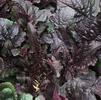
Salvia lyrata 'Purple Knockout'
Common Name: Purple Knockout lyre-leaf sage
Native to North America (cultivar)
Mainly grown for its rosettes of glossy burgundy leaves that transform to a deep purple in summer followed by red in the autumn, this native selection is the perfect substitution for non-native Ajuga. Blue flowers appear in late spring a…
[More Info]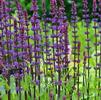
Salvia nemorosa 'Caradonna'
Common Name: Caradonna sage
Native to Europe and west-central Asia (cultivar)
Begin flowering purple psikes up to 2 feet tall in June in dry to moist soils. May continue to bloom if provided ample moisture in dry situations. Deer resistant, but butterflies and other pollinators love them. Trim back afte…
[More Info]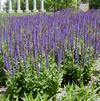
Salvia nemorosa 'East Freisland'
Common Name: East Freisland sage
Native to Europe and west-central Asia (cultivar)
Long blooming from June to September, the foliage stands at about 10 inches, while the flower spikes rise up to 18 inches. City-scape - no problem as these are air pollution & drought tolerant, but also a true survivor in the country a…
[More Info]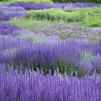
Salvia nemorosa 'Wesuwe'
Common Name: Wesuwe meadow sage
Native to Europe and west-central Asia (cultivar)
For the formal garden, designed meadow, or city scape. Purple flowers attract pollinators, butterflies and the occasional hummingbird. Deer, rabbit and drought resistant, the foliage is a blue green and the branching creates a plant 1…
[More Info]
Salvia x sylvestris 'Blue Hill'
cross between S. nemorosa and S. pratensis
Pure blue flowers flower from May to June above deer resistant foliage in dry to medium soils. Dead heading increases the length of flowering. Great as a cut or dried flower.
[More Info]
Salvia x sylvestris 'May Night'
Common Name: May Night wood sage
cross between S. nemorosa and S. pratensis
Purple flower from May to June above deer resistant foliage in dry to medium soils. Dead heading increases the length of flowering. Great as a cut or dried flower. Flowers attract butterflies and pollinators while the fragran…
[More Info]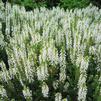
Salvia x sylvestris 'Snow Hill'
Common Name: Snow Hill wood sage
cross between S. nemorosa and S. pratensis
Pure white flower from May to June above mounding foliage in dry to medium soils. Dead heading increases the length of flowering. Great as a cut or dried flower. Attracts butterflies and pollinators while keeping the deer at ba…
[More Info]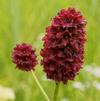
Sanguisorba officinalis
Common Name: Greater burnet
Native to Asia, Europe & North America
Showy dark red to purple-red flowers appear from May to June on these clump forming, rhizomatous low maintenance plants in full sun and average soils with medium moisture. Interesting compound odd-pinate leaves remain clean throughout the…
[More Info]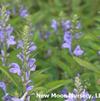
Scutellaria incana
Common Name: hoary skull cap
Native to North America
Prefering light shade and drier soils, this plant is adaptable to sun and more moist soils. In mid summer its strong square stems branch to produce an abundance of deep blue flowers 1 inch long, similar in appearance to snap dragons, and …
[More Info]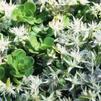
Sedum ternatum
Common Name: three-leaved stone crop
Native to North America
A mat forming evergreen wildflower. Leaves are small and blue-green. In early summer, sprays of starry white flowers tower to 6”. In the wild, this lovely sedum grows in close proximity to calcareous rocks.
[More Info]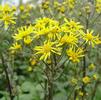
Senecio aureus
Common Name: Golden ragwort
Native to North America
A mounding perennial with shiny heart shaped basal leaves. In spring clusters of golden-yellow daisies rise above the foliage on sturdy stems. Plants form large colonies over time in wet or moist woodlands.
[More Info]
Silene caroliniana
Common Name: Wild pink
Native to North America
A tufted perennial wildflower with narrow lance-shaped leaves. In spring loose clusters of rosy pink flowers with dark centers rise above the foliage on slender stems. The floret bases are tubular and the petals are spreading and wedge …
[More Info]
Silene regia
Common Name: Royal Catchfly
Native to North America
Scarlet flowers in July & August attract Hummingbirds like a magnet. Grows best in full sun to partial shade in dry to medium soils. Great for shallow or rocky soils.
[More Info]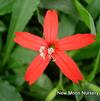
Silene virginica
Common Name: Fire pink
Native to North America
Tufted perennial wildflower with narrow lance-shaped leaves. In spring loose clusters of scarlet red flowers similar to Phlox spp. rise above the foliage on slender stems. The floret bases are tubular and the petals are s…
[More Info]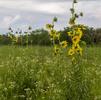
Silphium laciniatum
Common Name: Compass plant
Native to North America
Growing up to 9 feet tall with leaves similar to pin oaks. Sunflower like flowers from mid to late summer. Tolerant of poor soils. Native to central United States. Attractive to butterflies and other pollinators. …
[More Info]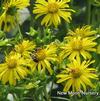
Silphium perfoliatum
Common Name: Cup plant
Native to North America
This quirky individual has sturdy square stems and large opposite leaves that are joined at the base. The tall stately plants are crowned with yellow daisies in summer for 4-6 weeks. This imposing long-lived perennial thrives in mois…
[More Info]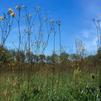
Silphium terebinthinaceum
Common Name: Prairie dock
Native to North America
A tall, rough plant, which occurs in limestone prairies and glades. From a basal clump of huge oval to heart-shaped, dark green leaves 1 to 2' long rise smooth, almost leafless stems branching at the top with sunflower-like flowers up to …
[More Info]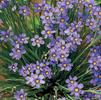
Sisyrinchium angustifolium 'Lucerne'
Common Name: Blue-eyed grass
Native to North America (cultivar)
‘Lucerne’ is a low rhizomatous wildflower. Plants form tufted clumps of narrow sword shaped leaves. Starry bright blue flowers rise above the foliage to a height of 12” or so. This diminutive beauty prospers …
[More Info]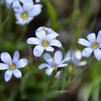
Sisyrinchium angustifolium 'Suwannee'
Common Name: Blue-eyed grass
Native to North America (cultivar)
Low rhizomatous wildflower that forms tufted clumps of narrow sword shaped leaves. Starry bright blue flowers rise above the leaves to a height of about 1’. This diminutive beauty prospers in sunny or lightly shaded gardens with…
[More Info]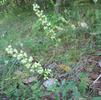
Solidago bicolor
Common Name: silverrod
Native to North America
Flowers are atteactive to butterflies, native and non-native bees, and songbirds eat the seeds. Extremely dry soil tolerant, growing well in sandy or rocky soils, but does well in average and clay soils. Sap is poisonous to deer a…
[More Info]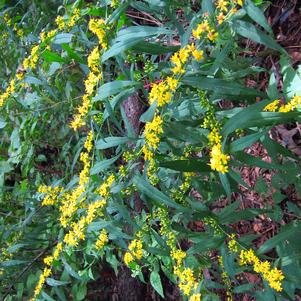
Solidago caesia
Common Name: Blue-stem goldenrod
Native to North America
From late summer into fall plants are graced with yellow axillary flower racemes. Plants are tough and adaptable prospering in part sun or part shade with mesic or average soil.
[More Info]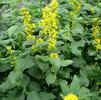
Solidago flexicaulis
Common Name: Zig-zag goldenrod
Native to North America
A great choice for dry shade, brightens up the woodlands in the fall. From late summer into fall plants are topped with elongated yellow flower clusters. Smaller axillary flower racemes develop lower on the stem.
[More Info]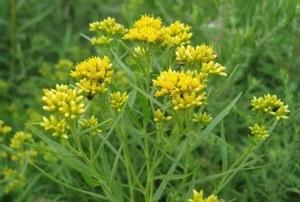
Solidago graminifolia
Common Name: Grass-leaved goldenrod
Native to North America
Upright perennial wildflower. Leaves are alternate, linear and grass-like. From late summer into fall stems are terminated with flat topped yellow flower clusters. Plants are tough, vigorous and adaptable, prospering in sunny or p…
[More Info]
Solidago nemoralis
Common Name: Prairie goldenrod
Native to North America
Rhizomatous. Favors poor soils, sand, clay, or gravel, but will flourish in the fertile soils as well. narrow nodding wands of numerous yellow compound flowers.
[More Info]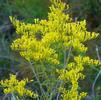
Solidago odora
Common Name: Sweet goldenrod
Native to North America
An upright clumping perennial wildflower with glossy anise scented foliage. Leaves are alternate and narrowly lanceolate. From mid-summer to autumn, stems are terminated with yellow pyramidal flower panicles. Plants are tough and adapt…
[More Info]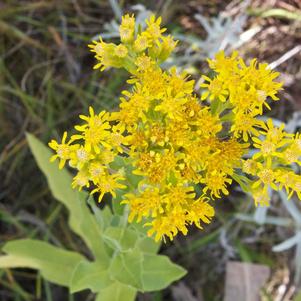
Solidago rigida
Common Name: Stiff goldenrod
Native to North America
An upright unbranched perennial wildflower with sturdy pubescent stems. Leaves are lance shaped or elliptical with a bluntly rounded tip. In late summer and autumn, attractive golden-yellow flat topped flower clusters appear. Plants ar…
[More Info]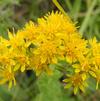
Solidago rigida ssp. humilis 'Golden Rockets'
Common Name: Golden Rockets goldenrod
Native to North America (cultivar)
2016 selection from Jellito Seed. Compact habit with sturdy stems and dense round heads of yellow flowers make it perfect for last summer color in the perennial border. Tolerates poor soils, attracts butterflies and pollinators, adap…
[More Info]
Solidago rugosa
Common Name: Wrinkle-leaf goldenrod
Native to North America
Solidago rugosa is an upright perennial wildflower with sturdy pubescent stems. Leaves are lance shaped or ovate. The blade surface is rugose with deeply indented veins that impart a wrinkled appearance. From late summer until …
[More Info]
Solidago rugosa 'Fireworks'
Common Name: Wrinkle-leaf goldenrod
Native to North America (cultivar)
Selected for its superior bloom, really looks like exploding fireworks when in bloom. ‘Fireworks’ is an upright perennial wildflower with sturdy pubescent stems. Leaves are narrow and lance shaped with a wrinkled surfa…
[More Info]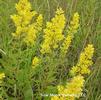
Solidago speciosa
Common Name: Showy goldenrod
Native to North America
Solidago speciosa is an unbranched clumping perennial wildflower with narrowly oval foliage. From late summer until autumn, plants are topped by attractive pyramidal golden-yellow flower panicles. This lovely goldenrod prosp…
[More Info]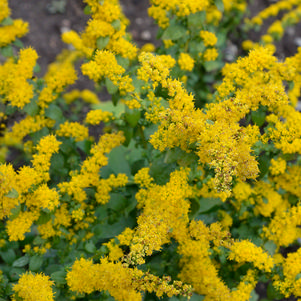
Solidago sphacelata 'Golden Fleece'
Common Name: Creeping goldenrod (No Advance Orders)
Native to North America (cultivar)
Solidago sphacelata 'Golden Fleece' is a bushy compact goldenrod cultivar with toothed heart shaped foliage. From late summer until autumn, plants bear profusions of golden yellow flower sprays. This lovely goldenrod variety prospers …
[More Info]
Stachys officinalis
Common Name: Bishop's wort
Native to Europe & Asia
Low maintenance tough perennial with showy flowers from July to August. Spreads by stolons to create a dense ground cover in full sun. Deer and juglone tolerant. Used medicinally in ancient Egypt and continues to be to this day.
[More Info]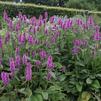
Stachys officinalis 'Hummello'
Common Name: Hummello betony
Native to Europe & Asia (cultivar)
2019 Perennial Plant of the Year as chosen by The Perennial Plant Association. Stachys officinalis ‘Hummelo’ is a rhizomatous perennial the produces basal rosettes of dark green glossy ovate basal leaves. Tiny two-lipped rose-la…
[More Info]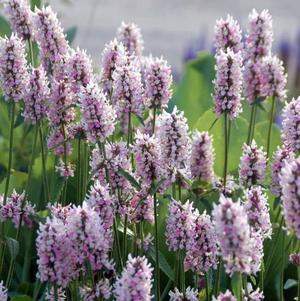
Stachys x 'Summer Crush'
Common Name: Summer Crush betony
cultivar
A front of the border or groundcover plant that is rhizomatous. Basal rosettes of dark green glossy ovate basal leaves. Tiny two-lipped fragrant white and pink bi-colored flowers appear in dense spikes atop mostly leafless flowering stems from June…
[More Info]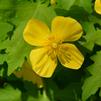
Stylophorum diphyllum
Common Name: Celandine poppy (No Advance Orders)
Native to North America
Stylophorum diphyllum is a low mounding wildflower with bold lobed leaves. In spring, stems are terminated by clusters of bright yellow poppy-like blooms. This unique perennial thrives in rich open woods or shade gardens …
[More Info]